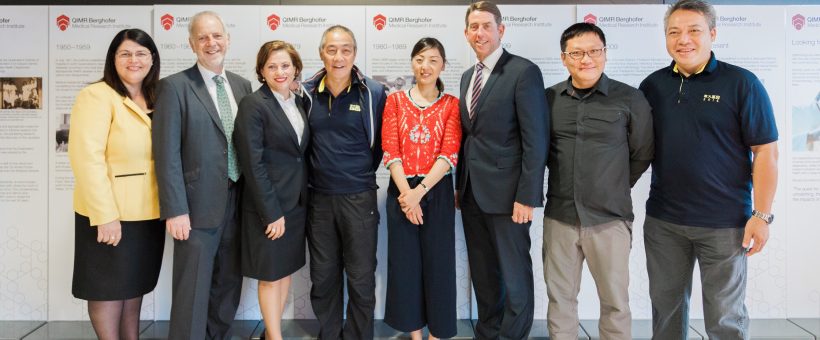COVID 19; How are we doing?
Frank Gannon
A million years ago, last year, each Saturday afternoon was a time to get the soccer results. A TV voice saying “Leicester City (one of my teams) 0, Manchester City 1” would be upsetting. Now the football and other sports are suspended, but we still get results…daily. These COVID results are not numbers, they are people and devastating is not the word to describe the pain behind them. There are no winners. I am confined in Ireland at present but have a great interest in other countries where I have lived and have family. Here and elsewhere , I hear of and see the great efforts that are being made to contain or delay the epidemic. Much up to date information is provided in each news bulletin; however I have not been able to get a sense of how well Ireland, Germany, Australia and other countries are performing relative to each other. Even the simple statistic of the number of deaths per million is seldom provided. The daily Irish death figure of approximately 20 seems low…….but is it when compared to e.g. Germany? We must have that comparative information to understand how we are performing as we respond to the different recommendations and rules in the different countries. This article ,building on data from Worldometer, is an effort to get some answers to how different countries are doing….and some guide to the timeline of the infections impact.
To get an impression of what is happening when comparing different countries, a choice has to be made on which parameter is the most reliable . The number of new cases is reported daily and is important. However it is a result that is dependent on how many tests are performed and what category of individuals are chosen for the test. Cynically, zero tests means zero new cases, or tests on the general public without symptoms will give a different result to an tests on those that have two key symptoms. So, I have not used these data as a guide. Other data are important guides to those making decisions for the population. An example would be how close are the number of cases that require hospitalization to the total number of ICU beds available. However these data are not readily accessible .
I have focused on the most depressing statistics; the number of deaths that are reported daily. Of course there is some room for the blurring of figures here also; are the deaths attributed to COVID all inclusive (e.g. are deaths that do not occur in hospitals included) or must a positive Coronavirus test be obtained before inclusion. Nonetheless, I expect that in each country these data are relatively consistent internally (hence the trends are correct) and generally good for international comparisons.
I have used the excellent data reported daily on www.worldometers.info. On its site it provides the number of deaths per million population. I was surprised that Ireland currently(4.4.20) is at 28 ,similar to Denmarkand is not doing as well as some other countries such as Austria or Germany . The USA figure is increasing rapidly, but like China, the COVID has not moved into all parts of these large countries. Canada and Australia and eastern European countries have very good statistics.
Deaths per Country
4/4/2020
COUNTRY Total deaths Deaths/Million
IRELAND 137 28
GERMANY 1446 17
AUSTRALIA 34 1
U.K. 4313 64
USA 8454 26
FRANCE 7560 116
SPAIN 12418 266
ITALY 15362 254
CHINA 3329 2
In the table below, I calculate the % increase daily for the past 5 days ( up to 4.4.20) and the number of deaths daily and how that number is trending. In most countries the % increase is linear for the recent past. There are some surprises; e.g. the increase in Spain is low (8%per day) but started over a month ago and hence has accumulated to a large figure. The UK daily increase is worryingly high at 28%.
COUNTRY Current Daily accumulative % increase for last 5 days
Source of primary data; https://worldometers.info
IRELAND 18%
GERMANY 17%
AUSTRALIA 10%
UK 28%
FRANCE 23%
ITALY 12%
SPAIN 8%
USA 22%
CHINA Stable 30 days
When the daily deaths are studied there are many countries that are now, apparently ,at a plateau. Some have been there for a period that suggests that the increasing numbers per day may be in the past, although the daily deaths are still very high (e.g.Spain,Italy). Germany and France may be into a plateau-in another week this will be more clear. For other countries ,e.g. Ireland, the numbers are small so the conclusion that this may be the daily level may be premature. Again the countries where things seem to be out of control are the US and UK ; their daily death numbers continue to increase with every report and there is no sense of optimism that the peak has been climbed. Australia has very good numbers to date by all parameters.
Current Covid Death Data trends
Source of primary data; https://worldometers.info
COUNTRY Daily trend
IRELAND Flat for 8days (16/day)
GERMANY Flat for 4 days ~160/day
AUSTRALIA Flat for 10 days (2/day)
UK Up
FRANCE Down for 3 days-unclear
ITALY Flat for 13 Days ~750/day
SPAIN Flat for ~12 Days ~750/day
USA Up
CHINA DOWN .Plateau ~16 days, then down
To get some idea of the profile of the timeline for the disease, I looked at China. From the presented data, China reached a plateau after approximately 20 days of increasing number of deaths ,remained at a plateau for approx. 16 days and then had diminishing numbers of deaths reported. It took approximately 25 days to get down to zero COVID deaths as a norm. Iran (another early hotspot for COVID has been at a daily plateau for approximately 20 days and the number of deaths per day has not yet diminished. Based on these inadequate early pointers it would suggest that it may take up to a month to reach a plateau, another month after reaching a plateau before there is a real decrease in the daily death toll……and perhaps at least another month before the deaths become close to zero.
Of course all statistics can be used selectively and I have focused on one set of data recorded deaths. Those making decisions for the populations have the full range of data including local clusters, severity and age profile of the cases that are presented for clinical assessment, capacity of the system, cultural responses to restrictions etc. Governments will be in a challenging position when the trends suggest the worst of COVID is over and the demands to get the economy going again grow loud. I hope that we reach that particular conundrum very soon as it would mean that the reaper has passed these fields and the results of Sligo Rovers, Leicester City or the Queensland Reds are the source of (unimportant) disappointment or joy.








